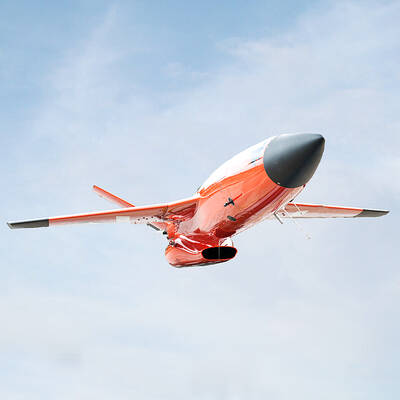The "Asian Brown Cloud," a 3km-thick blanket of pollution over South Asia, may be causing the premature deaths of a half-million people in India each year, deadly flooding in some areas and drought in others, according to the biggest-ever scientific study of the phenomenon.
The grimy cocktail of ash, soot, acids and other damaging airborne particles is as much the result of low-tech polluters like wood- and dung-burning stoves, cooking fires and forest clearing as it is of dirty industries, the UN-sponsored study found.
"When you think about air pollution, many people think of industry and fossil fuels as the only causes," report co-author Paul Crutzen, a scientist at the Max-Planck Institute for Chemistry in Mainz, Germany, told a news conference in London.
Often ignored, he said, was "biomass burning," including forest fires and the burning of vegetation to clear land or to warm the homes of poor people.
More than 200 scientists contributed to the study, overseen by the UN Environment Program in preparation for the World Summit on sustainable Development opening Aug. 26 in Johannesburg, South Africa. They used data from ships, planes and satellites to study Asia's haze from 1995 to 2000.
The scientists say more research is needed but that some trends are clear. Respiratory illness appears to be increasing along with the pollution in densely populated South Asia, with one study suggesting the pollution causes as many as 500,000 premature deaths annually in India.
The dense cloud of pollution -- also caused by auto emissions, factories and waste incineration -- cuts the amount of sunlight reaching the ground and the oceans by 10 percent to 15 percent, cooling the land and water while heating the atmosphere.
That phenomenon appears to have altered the region's monsoon rains -- increasing rainfall and flooding in Bangladesh, Nepal and northeastern India, while cutting back needed seasonal precipitation in Pakistan and northwestern India.
Floods, drought, sunlight reduction and acid rain all can hurt agricultural yields, with the report indicating the pollution may be cutting India's winter rice harvest by as much as 10 percent.
Veerabhadran Ramanathan of the Scripps Institution of Oceanography in La Jolla, California, one of the report's authors, said the extent of the sunlight loss was "a major surprise."
Scientists say it's too early to draw definite conclusions about the impact of the cloud, and of similar hazes over East Asia, South America and Africa.
"We need much more basic scientific data to be able to establish what are the consequences for human health and the environment," said co-author Crutzen, co-winner of the 1995 Nobel chemistry prize for his work on the ozone layer.
But they warn the impact could be global since prevailing winds can push pollution clouds halfway round the world within a week.
It's unclear what the haze's relationship is to global warming, which most scientists believe is caused by the emission of greenhouse gases that trap the Earth's heat. The pollution cloud appears to cool the area below by blocking sunlight.

‘WIN-WIN’: The Philippines, and central and eastern European countries are important potential drone cooperation partners, Minister of Foreign Affairs Lin Chia-lung said Minister of Foreign Affairs Lin Chia-lung (林佳龍) in an interview published yesterday confirmed that there are joint ventures between Taiwan and Poland in the drone industry. Lin made the remark in an exclusive interview with the Chinese-language Liberty Times (the Taipei Times’ sister paper). The government-backed Taiwan Excellence Drone International Business Opportunities Alliance and the Polish Chamber of Unmanned Systems on Wednesday last week signed a memorandum of understanding in Poland to develop a “non-China” supply chain for drones and work together on key technologies. Asked if Taiwan prioritized Poland among central and eastern European countries in drone collaboration, Lin

The Chien Feng IV (勁蜂, Mighty Hornet) loitering munition is on track to enter flight tests next month in connection with potential adoption by Taiwanese and US armed forces, a government source said yesterday. The kamikaze drone, which boasts a range of 1,000km, debuted at the Taipei Aerospace and Defense Technology Exhibition in September, the official said on condition of anonymity. The Chungshan Institute of Science and Technology and US-based Kratos Defense jointly developed the platform by leveraging the engine and airframe of the latter’s MQM-178 Firejet target drone, they said. The uncrewed aerial vehicle is designed to utilize an artificial intelligence computer

Renewed border fighting between Thailand and Cambodia showed no signs of abating yesterday, leaving hundreds of thousands of displaced people in both countries living in strained conditions as more flooded into temporary shelters. Reporters on the Thai side of the border heard sounds of outgoing, indirect fire yesterday. About 400,000 people have been evacuated from affected areas in Thailand and about 700 schools closed while fighting was ongoing in four border provinces, said Thai Rear Admiral Surasant Kongsiri, a spokesman for the military. Cambodia evacuated more than 127,000 villagers and closed hundreds of schools, the Thai Ministry of Defense said. Thailand’s military announced that

CABINET APPROVAL: People seeking assisted reproduction must be assessed to determine whether they would be adequate parents, the planned changes say Proposed amendments to the Assisted Reproduction Act (人工生殖法) advanced yesterday by the Executive Yuan would grant married lesbian couples and single women access to legal assisted reproductive services. The proposed revisions are “based on the fundamental principle of respecting women’s reproductive autonomy,” Cabinet spokesperson Michelle Lee (李慧芝) quoted Vice Premier Cheng Li-chiun (鄭麗君), who presided over a Cabinet meeting earlier yesterday, as saying at the briefing. The draft amendment would be submitted to the legislature for review. The Ministry of Health and Welfare, which proposed the amendments, said that experts on children’s rights, gender equality, law and medicine attended cross-disciplinary meetings, adding that